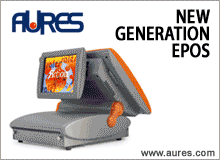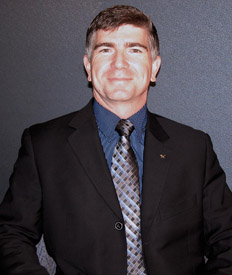
Michael Kachmar, Editor
(If your e-mail client does not display this properly, click here.)
This Week’s Product Pick
FEC USA (Fremont, CA) rolled out its ultra-compact MiniPOS terminal, featuring industrial-grade components, 8.4-inch TFT LCD, and integrated two-inch thermal receipt printer. Built on the fanless, heatless platform with Intel Celeron M 1-GHz ULV CPU, the MiniPOS fulfills performance, style, and space-saving requirements across diverse retail and hospitality environments, according to the vendor. In addition, the terminal may be wall-mounted for applications such as price checking or self-service ordering. MiniPOS measures 10.3 in. x 9.4 in. x 3.9 in. and delivers front panel brightness of 400 nits. It carries the full complement of I/O ports for additional peripherals, along with SATA HDD and Compact Flash (CF). The embedded two-inch thermal receipt printer offers easy paper setting (with one button to open the cover), auto-cutting capability (selectable full cut or partial cut types), and high-speed printing (maximum print speed of 60 mm/second). A compact design with an external power supply makes MiniPOS, which comes in white or charcoal, easy to install and maintain. “MiniPOS is the only All-in-One terminal with an 8.4-inch touch display and hefty two-inch receipt printer,” said Scott Johnston, VP of Sales for FEC USA. “It takes up less than one square foot of space to do one million tasks, packaged with the right software. We will aggressively go after large projects with pricing.”
For more information, click here.
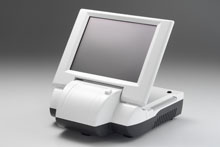
MiniPOS from FEC USA
COMPANY BUSINESS IBM Recharges SurePOS 500 IBM’s next-generation SurePOS 500 ships this fall, bringing advanced features and functions intended to help retailers create smarter, more dynamic, and more efficient business processes. IBM has brought several of its higher-end technologies to the new SurePOS 500, including an advanced infrared (IR) touchscreen, biometric fingerprint reading, “deep-sleep" energy-saving capability, Light-Path diagnostic management, and tool-free retail-hardened system design. In an interview with RRN.Com, Derek Franks, IBM’s Marketing Manager for the SurePOS 500, pointed in particular to the new terminal’s state-of-the-art “inadvertent” touchscreen technology, “basically an accelerometer that sits inside the display and measures vibration." This feature reduces the risk of unintended touch registration by allowing the 15-inch IR touchscreen to be set at different levels of force. Along with enhanced SurePOS 566 and 526 models for midsized and larger businesses, IBM has introduced its newest SurePOS Express solution that offers VARs great flexibility in meeting the specific peripheral requirements of smaller merchants. SurePOS Express bundles only the POS terminal, IBM’s SureMark single-station thermal receipt printer (with 80 lines per second performance), and the O/S--in this case, Microsoft Windows POSReady. Additional new benefits include higher processing speeds, better serviceability, and an increase in screen size from 12 inches to 15 inches. The IBM SurePOS 500 also offers enterprise-class management capability through IBM Remote Management Agent (RMA). Available at no additional charge, this system management tool allows retailers to remotely monitor POS units, as well as track assets and distribute software. According to Franks, RMA represents an untapped area of opportunity for VARs. List price for an IBM SurePOS 566 with onsite warranty is $3,130. List price with onsite warranty for the Model 526 is $2,130. SurePOS Express E26s with printer and software lists at $2,199. “SurePOS 500 has been extremely successful for us, particularly in the VAR/ISV channel,” Franks told RRN.Com. “We’ve expanded into a number of new segments that we didn’t initially target. Now we’ve taken the feedback from our partners and their customers around the need to manage costs, provide high levels of security and reliability, as well as to improve customer service. We’ve made a lot of changes based on this feedback. I think we’ve got the best generation of SurePOS 500 that we’ve ever produced.”
Taking AIM at the Channel AIM, the Association for Automatic Identification and Mobility, has launched its new branding and recruitment campaign, dubbed “Real Opportunities Today . . . Leadership for Tomorrow,” which seeks to spur growth and reposition the association in the eyes of vendors, resellers, and end-users. The initial push features several key elements, most notably changes in the membership structure and elimination of the artificial divide between AIM Global and AIM North America. “From now on, we want to talk about AIM and we want our members to talk about AIM,” Dan Mullen, AIM’s President, related to RRN.Com. In the past, AIM North America (Warrendale, PA) and AIM Global provided separate programs and services in much the same way other AIM chapters around the world have maintained their own unique identities and membership. As part of the new effort, membership dues have been tailored to provide organizations of all types and all sizes with the opportunity to receive AIM benefits at lower cost. Members can now choose their category based on their company type and pay dues in proportion to their gross sales revenues in AIM-related markets (which include barcoding, RFID, RTLS, and mobile computing). Categories include: Manufacturer, Channel (resellers, system integrators, and consultants), Independent Software Vendors (ISVs), Distributors, and Associates (K-12 and universities, non-profits, government, and end-users). More participation from the reseller community, including smaller entities, will be one of the major goals moving forward, RRN.Com has learned. “From my perspective, we’ve been underrepresented in the reseller community,” shared Fred Dotson, AIM North America Board Member and Director of Technical Services for ScanSource POS & Barcoding. “AIM has been viewed, and I think accurately, as more of an organization for manufacturers. We realize we need to be inclusive of everybody in the marketplace.”
|
|
Worth Your While
VARTECH 2009
BlueStar
August 13-15
Nashville, TN
Poll-A-Rama IV
Tri-Technical Systems
September 15-16
Dubuque, IA
2009 APICS International Conference & Expo
Association for Operations Management
October 4-6
Toronto
2009 IFDA Distribution Solutions Conference
International Foodservice Distributors Association
October 19-21
Baltimore
NACS Show 2009
National Association of Convenience Stores
October 20-23
Las Vegas
BAI Retail Delivery Conference & Expo
Bank Administration Institute
November 3-5
Boston
Synergy 2009 Customer Conference
Retalix
November 8-11
Dallas
NRF 99th Annual Convention & Expo
National Retail Federation
January 10-13, 2010
New York
ALL IN THE FAMILY
Honeywell’s Dolphin Show
Honeywell Scanning & Mobility (Skaneateles Falls, NY) made two enhancements to its Dolphin 9900 product line: availability of Microsoft Windows Mobile 6.1 for all models in the Dolphin 9900 Series, and introduction of the new Dolphin 9951 mobile computer with support for long-range barcode scanning. Windows Mobile 6.1 will provide developers and customers with increased performance, advanced features, and improved network security, according to the hardware vendor. “We’re offering free upgrade for all qualified customers, allowing them to immediately realize the benefits of Windows Mobile 6.1,” said Garrison Gomez, Manager of Mobility Marketing for Honeywell Scanning & Mobility.
The new Dolphin 9951 incorporates all of the proven features of the Dolphin 9950, with the addition of three long-range laser options--High Performance, Long Range, and Advanced Long Range--to provide scanning functions from five feet up to 30 feet. Designed for scan-intensive application environments in retail or warehousing, the 9951 handles situations in which palettes or other coded inventory are located at some distance. “Customers can easily scan hard-to-reach barcodes at the top of a warehouse shelf or across the dock, rather than finding and using a forklift or ladder to get into range,” Gomez pointed out. “The ability to scan distant barcodes from the ground saves time and increases safety.”
The rugged 9951 features an ergonomic pistol grip to facilitate comfortable single-handed data collection. Shift-PLUS power management technology ensures uninterrupted battery performance for 10 or more hours, eliminating the need to replace batteries during most work shifts. Lastly, three keypad configurations match the variety of end-user scenarios, including 35-key numeric keypad with shifted alphabetical functions for basic retail use, 43-key alphabetical keypad with shifted numeric functions, and 56-key full alphanumeric keypad for warehouse and distribution environments.
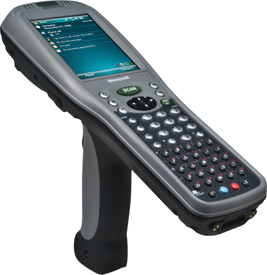
New Dolphin 9951 with Extended Laser Scanning
Magellan 8500Xt Launched by Datalogic Scanning
Datalogic Scanning (Eugene, OR) has christened its Magellan 8500Xt POS bi-optic scanner, which adds key features and capabilities to its popular Magellan 8500, including an upgraded, state-of-the-art microprocessor for hard-to-read barcodes such as GS1 DataBar. Magellan Scale Technology, the company’s new factory-certified weighing system, achieves scale-settling time of less than 500 milliseconds while helping to cut integration costs, while the patented All Weighs scale platter allows cashiers to more easily weigh long or bulky produce, thereby reducing shrink. SurroundScan 3D Scanning provides six-sided scanning to improve throughput, operational efficiency, and customer satisfaction, according to the company.
The new Magellan 8500Xt also offers the Dual-Range scale option to enable more precise weighing of small, high-value items. This new scale technology is supported by Sextante GZPS software, described as the world’s first Web-based application to select the correct gravity zones for pre-verified scales. In addition, the Magellan 8500Xt scanner brings enhanced user label editing that enables pre-formatting of data before delivery to the POS as well as optional pre-installed Sensormatic or Checkpoint EAS (Electronic Article Surveillance) technology to reduce “sweethearting.” Lastly, its smaller below-counter footprint reduces the need for check-stand modifications.
“Datalogic Scanning recognizes that the needs of our customers and partners, as well as the technologies of today and tomorrow, continue to evolve within the retail scanning marketplace,” observed Matt Schler, GM, Fixed Retail for Datalogic Scanning. “We achieve this goal in the Magellan 8500Xt scanner by combining new innovations with the renowned reliability and 360-degree SurroundScan 3D Scanning capability of the Magellan.”
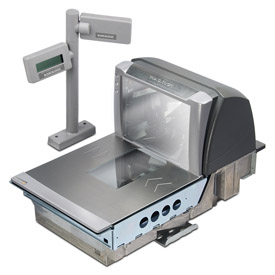
Magellan 8500Xt from Datalogic Scanning
Join the Party at No Charge
Do you need to reach the POS & Auto ID resellers who really drive business—in the most targeted editorial environment, and on the most cost-effective basis?
E-mail Michael
Kachmar for advertising information,
or call 973-270-3284
Did you miss one of our issues and suddenly realize your competitors know more than you do?
Hurry ! Use the links below to catch up :
CERTIFICATION
Star’s in the Kitchen with Dinerware
Star Micronics America, Inc. (Edison, NJ) received certification from Dinerware (Seattle) for its hospitality-focused thermal and dot-matrix printers. Star’s SP700 (Serial and Ethernet versions), TSP650 (Serial), TSP100 (USB), and TSP100LAN have all been certified by Dinerware. The SP700 represents Star’s fast, two-color dot-matrix printer built specifically to work in environments where heat and humidity can erode the type on the kitchen order. It offers crisp, easy-to-read type for quick viewing and clamshell design for easy paper loading.
“Star is pleased to be recognized by an industry leader such as Dinerware,” acknowledged David Salisbury, Product Manager, Star Micronics America. “To have our core hospitality thermal and dot-matrix printers certified by a software company who is continuing to grow, be cutting-edge, and quickly establishing itself as a hospitality leader, is a testament to Star’s ‘Always Leading - Always Innovating’ motto.”
Star also recently redesigned its Website, which now includes Frequency Asked Questions regarding the company’s thermal, impact, and multifunction hybrid printers. Topics include Star Micronics printer connection interfaces, making Star Micronics printers work in Windows, Mac, Linux, OPOS, and JavaPOS environments, developer tips, and POS application set-up. While technical support is still available free of charge via phone or e-mail, the FAQ Site gives users the opportunity to take an independent approach to answering questions, according to the company.
For more information, click here.
David Salisbury, Product Manager, Star Micronics
Higher Frequency Found at Summit
Summit Data Communications (Akron, OH) has addressed the little-used 5-GHz frequency band with two new radio modules. The modules, which will be certified for Cisco Compatible Extensions (CCX) Version 4 this month, enable today’s mobile devices to exploit the capabilities of enterprise Wi-Fi infrastructure products that support the draft IEEE standard of 802.11n. RRN.Com readers will remember that 802.11n operates in both 2.4-GHz (802.11b/g) and 5-GHz (802.11a) bands and seeks to improve the connection reliability of all clients, including those that employ pre-“n” standards.
“One of the big reasons to deploy 802.11n gear in your business infrastructure is to exploit the 5-GHz band,” noted Chris Bolinger, Summit’s VP of Sales and Marketing. “Summit’s new dual-band radios use proven, standards-based technology to deliver secure and reliable connectivity in that band as well as the 2.4-GHz band.”
The pair of new products includes the SDC-MCF10AG module, with Compact Flash interface, and the SDC-MSD10AG module, which has an SDIO interface. Because they employ the same board connector and pin definitions as Summit’s 2.4-GHz modules, the new AG modules provide device manufacturers and integrators with an upgrade path from single-band to dual-band support. Like other Summit products, the new AG modules are Wi-Fi certified and operate on Microsoft Windows CE and Windows Mobile. The MCF10AG and MSD10AG modules list for $159, with volume discounts available. The purchase price covers radio hardware, software, and support services provided by Summit and Summit partners.
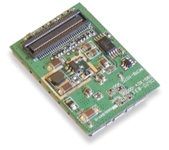
Summit Radio Module Earns Cisco CCX V4 Certification for 5 GHz
[Editor’s Note: Summit also announced its new strategic alliance with Unitech Electronics Co. (Taipei, Taiwan). The partnership ensures that enterprise-class Unitech mobile computers will support all key industry standards for Wi-Fi through Summit, including Cisco CCX Version 4, PCI DSS compliance, and WPA2-Enterprise security.]
Code
Corner
FileTrail (San Jose, CA) released new tools for integrating RFID functionality into existing tracking applications. The FileTrail RFID Toolkit, comprising comprehensive Microsoft .NET Web Service functions, will work with almost every existing application, including barcode-based tracking systems and schemes built upon older RFID technologies, according to the developer. FileTrail developed this solution using Microsoft .NET Version 3.5 and the Windows Communication Foundation (WCF). A suite of Web Services support multiple transport protocols, including HTTP and WS HTTP, and provide industry-standard messaging such as SOAP (1.1 or 1.2) and MTOM. The RFID Toolkit runs on Windows Server 2003/2008 (with IIS) and uses the SQL Server 2005/2008 database. “We’ve created the ideal way for an organization to get more value from their existing tracking application investment,” declared Darrell Mervau, VP of Business Development at FileTrail. “Everyone knows the benefits that RFID can bring to an organization, but may see the cost of replacing their existing infrastructure as prohibitive. Now with our RFID Toolkit, we’ve created the bridge between existing systems and the latest RFID technology.”
Nodus Technologies (Anaheim, CA) offered CRM Charge 4.0 for Microsoft Dynamics CRM, described as the first off-the-shelf product that adds real-time credit card and electronic check processing to Dynamics CRM. Nodus CRM Charge allows Microsoft Dynamics CRM users to process electronic payments with many business process automations while managing customer relationships, according to the developer. In addition to enhanced sale quote and order entry, it comes with advanced security features, split key control management, and audit trail for meeting PCI compliance requirements. “In today’s times, efficiency is essential,” observed Donte Kim, CEO of Nodus Technologies, which claims to be the only Microsoft Business Solutions vendor with Visa PA-DSS certification for the Microsoft Dynamics market. “Nodus has a long history of developing solid, easy-to-use payment solutions that integrate seamlessly with Microsoft applications. We are proud to lead the charge in the CRM market by offering this solution that many Microsoft Dynamics CRM customers want and need.”
STARTS & STOPS
Now Shipping: Microsoft Dynamics POS 2009
Microsoft Corp. (Redmond, WA) has officially released Microsoft Dynamics POS 2009, its next-generation POS software package for retail. First previewed at last January’s NRF Show in New York, the new solution features an intuitive and highly customizable user interface that gives all employees--from the storefront to the back office--access to critical information such as inventory levels and purchase history. The interface has been optimized for touchscreens and can be tailored for specific roles or individuals, increasing productivity and reducing costs associated with training times, according to the developer. Further, retailers have the ability to create custom buttons for completing common tasks.
“We know retailers need to be responsive in order to keep customers happy and keep them coming back into their stores,” commented Michael Griffiths, Group Product Manager, Microsoft Dynamics Retail Solutions. “Microsoft Dynamics POS 2009 is easy to use and provides powerful data so retailers can spend more time with their customers and less time and money worrying about training employees or managing their technology.”
Among the solution’s new features: smart search, which enables employees or managers to call up relevant information quickly and easily; security-enhanced payment processing that meets Payment Card Industry Security Standards Council guidelines; real-time inventory management and flexible reporting tools, with integration to Microsoft SQL Services and Microsoft Office; and, last but certainly not least, Microsoft’s Software Development Kit (SDK), which allows partners to develop add-on solutions in areas such as multichannel and mobility. Finally, Microsoft Dynamics POS 2009 is simple to deploy and manage, and seeks to reduce the customer's total cost of ownership by working in conjunction with other Microsoft technologies in CRM and ERP.
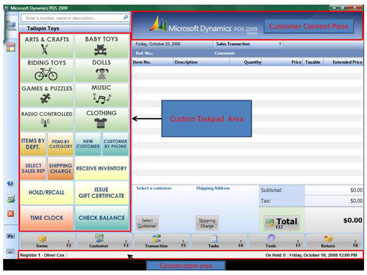
Microsoft Dynamics POS 2009 User Screen
[Editor’s Note: RRN.Com has interviewed Michael Griffiths, Group Product Manager, Microsoft Dynamics Retail Solutions, in greater detail on POS 2009. That story will run in our next edition.]
A Single Log-In for SaaS
Universal log-in for SaaS (Software-as-a-Service) has been accomplished by Ping Identity (Denver), which recently integrated its PingConnect on-demand Single Sign-On (SSO) service with Google Apps. Google Apps users can now log in to their Google Apps domain, then directly access their other SaaS applications, such as Salesforce CRM, by simply clicking the link. No further authentication will be required, thereby minimizing log-in failures and password resets.
PingConnect extends the reach of Google Apps log-in credentials to Salesforce, WebEx, Concur, SuccessFactors, and more than 60 other SaaS applications. This gives companies who are using Google Apps the option of managing all of their SaaS user accounts via the Google Apps domain--an alternative to site-based corporate directories (Active Directory or LDAP). The combined offering is based on the OpenID authentication protocol with Google Apps acting as an OpenID provider and PingConnect acting as an OpenID relying partner. Once the user’s identity has reached PingConnect, it can then transfer to any SaaS providers who integrate with PingConnect via Security Assertion Markup Language, or SAML.
“This is a huge step forward for companies implementing SaaS,” related Ping Identity CEO Andre Durand. “Universal SaaS log-in via Google Apps allows users to take full advantage of the benefits of SaaS without the constraints that come with managing user passwords across any number of SaaS platforms. The continued development collaboration between Ping Identity and Google has resulted in another critical identity solution for customers.”

Andre Durand, CEO, Ping Identity
Key
Advertiser
Links
Be sure to visit these vendors for the latest in channel products and offers for resellers.
POS & Auto ID Distribution
BlueStar
M-S Cash Drawer
ScanSource
POS & Peripherals
Aures Technologies
FEC USA
Logic Controls
Pioneer POS
POS-X
Barcode & Mobile Printers
Datamax-O'Neil
Cash Drawers
MMF Cash Drawer
Data Collection Terminals
CipherLab
Datalogic
Mobile
Honeywell Scanning & Mobility
Janam Technologies
Motorola
Integrated Payment Solutions
Datacap Systems
Receipt
Printers
Bixolon America
Star Micronics
Retail Software
InfoTouch
Logivision
Screen Protection
3M Optical Filters
Video Surveillance & Access Control
ScanSource Security
INTEGRATION
Grow Up, Activant Tells Pharmacies
Activant Solutions, Inc. (Livermore, CA) introduced an integration bridge between its Activant Eagle POS and business management technology and the industry’s leading pharmacy management systems. The solution provides drugstores with the ability to “supercharge” their retail business in coordination with their current pharmacy system, according to the developer. Specifically, Activant’s Pharmacy Integration Bridge acts as an interface between the Activant Eagle software and the HBS, McKesson, PDX, and QS/1 pharmacy management systems, among others.
Activant’s Pharmacy Integration Bridge allows pharmacies to provide one point of service to its customers. The customer can select sundries from the front of the store, pick up his or her prescription from the back of the store, and pay for all items at the same time in one seamless transaction. Further, the integrated bridge enables pharmacies to collect HIPAA (Health Insurance Portability and Accountability Act) signatures and healthcare benefit card information as part of their PMS solution. It will separate the amount covered by Health Savings Account/Flexible Spending Account (HSA/FSA) payment cards, versus what has to be paid with cash, check, or credit/debit/gift card, and will calculate the co-pay.
“Pharmacy management systems are complex solutions that perform a difficult and important function in managing a successful pharmacy operation,” declared Paul Salsgiver, EVP for Activant Solutions. “However, recent changes to the pharmacy industry are forcing drugstores to become more sophisticated retailers. Activant has over 30 years of working with top retailers across the U.S., including a number of independent drugstores that are leveraging this knowledge and experience to dramatically improve their retail operations.”

Prescriptions Draw Customers, But Retail Sales Generate Profits
This Kiosk Protects Kids
TouchMate (Elgin, TX) has assembled SchoolDefender to help K-12 schools protect against entry by dangerous or unauthorized persons. SchoolDefender employs an interactive touchscreen kiosk to register all visitors to the school. The badge it produces shows the name and photo of the visitor, what areas of the school the person may visit, and when the badge expires. No more handwritten sign-in books with illegible and incomplete information, according to TouchMate. Rather, better compliance with school policies and improved school safety.
SchoolDefender utilizes PassagePointEDU from STOPware (San Jose, CA), one of the industry leaders in visitor management solutions, to power the system. This software automatically, and silently, executes background checks, including searching the national Safe Schools Project database of convicted sexual predators that covers all 50 states. If the visitor appears on one of the school’s watch lists, which can also contain information about child custodial orders and other important details about restricted access to the school, that information is immediately called to the attention of the school administration and security staff through an electronic message.
TouchMate provides various form factors for its SchoolDefender system, including floor, countertop, and wall-mounted touchscreen kiosk self-service stations. The company also offers inexpensive office monitoring touchscreen stations, printing and ID scanning options, proximity detection for added data security, biometric fingerprint-reading input, central server computers, and add-on electronic signage. The system will become available next month. TouchMate, incidentally, started life as an Australian software development studio in 1992, and has kept at it in the custom-design kiosk industry.
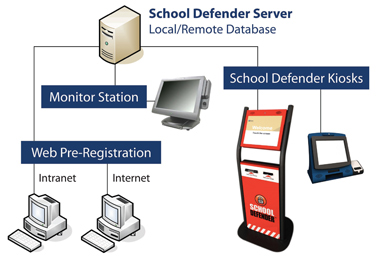
TouchMate’s SchoolDefender System for K-12
Channel Factoid
The market for managed wireless security services will more than triple in size over the next five years, experiencing robust, recession-resistant compound annual growth rate (CAGR) of 27% for the years 2008 to 2014, and exceeding $1 billion at the end of that period. “The managed wireless security services growth rate is quite dramatic,” reported Stan Schatt, VP of ABI Research, which conducted the study. “It’s due to the explosive growth of large WLAN deployments. As these grow, organizations in certain markets such as healthcare and hospitality are finding it more efficient to outsource their security management rather than to do it themselves. That’s particularly true of institutions that have many smaller branches without trained IT personnel.” There is also what Schatt terms “an absolutely incredible opportunity” among small and midsized businesses: as they increase their Wi-Fi usage, they see great benefit in having their wireless security--especially wireless video surveillance--managed for them.
INSTALLATIONS
Planet Aid Counts on CipherLab
CipherLab (Plano, TX) announced that Planet Aid, the non-profit group based in Massachusetts, now uses CipherLab’s 8000 series mobile computers to streamline its clothing collection and recycling program across the U.S. Planet Aid employees use the CipherLab 8000 to track amounts of donated clothing in more than 7,000 collection boxes. That data is uploaded to Planet Aid’s main database where site and performance metrics can be analyzed instantly, helping Planet Aid create more efficient collection schedules based on the amount of clothing each bin receives.
“Before we adopted CipherLab’s handheld scanners, it could take hours for the drivers’ data to be entered and then more time to finally analyze it,” said Jerry Maday, Operations Manager at Planet Aid headquarters. “With the CipherLab 8000 series mobile computers and our custom business applications, we are able to significantly reduce the amount of paperwork for our drivers and operations staff, dramatically streamlining our core operation at Planet Aid.”
“The deployment at Planet Aid is of special interest to CipherLab, because the money we are saving the organization is going directly to a good cause,” added Al Crawford, CipherLab’s VP of Technology. “In this case, the 8000 series truly lives up to its goal of delivering anywhere mobility, because it is enabling the most mobile worker of all: the driver.”
The CipherLab 8000 mobile computer offers an ergonomic, rugged design, with linear imaging or laser reading, and data entry via multiple wireless communication options. Features include 100 continuous hours of battery life, radio range of up to 1,148 feet, and an easy-to-read backlight LCD screen for low light areas. It supports C and Basic programming, with custom applications enabled by the CipherLab Application Generator.
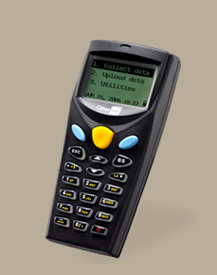
CipherLab’s 8000 Series Mobile Computer
The Home Depot Nails Down PayPass
The Home Depot, the world’s largest home improvement specialty retailer, will begin accepting MasterCard PayPass at 1,974 retail locations across the U.S. With MasterCard PayPass, The Home Depot’s customers will enjoy faster transactions and greater payment convenience by simply tapping their MasterCard PayPass cards or devices on the PayPass reader at checkout to complete their purchases, according to the two parties. The Home Depot will also continue accepting all other traditional magnetic-stripe payment card brands, it should be noted.
As of Q1 2009, over 55 million PayPass-enabled cards or devices had been issued, more than doubling the number of cards and devices in circulation around the world in one year. In addition, according to MasterCard research, 41% of consumers say they use cash less often today than they did two years ago. Of the consumers who have PayPass, 77% say they use it as their primary form of payment.
“Contactless payments meet consumer demand for more convenient ways to pay in retail environments,” explained Cathleen Conforti, SVP, Global PayPass, MasterCard Worldwide (Purchase, NY). “The increasing popularity of MasterCard PayPass demonstrates that merchants and customers alike appreciate the speed and convenience PayPass delivers, as consumers continue to shift their preference to electronic payments from cash and check.”
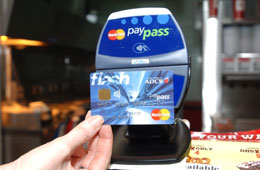
MasterCard PayPass: 55 Million Users and Counting
PinPoint Media
All Rights Reserved


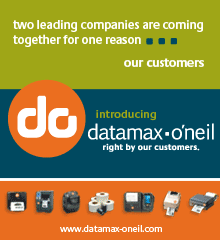


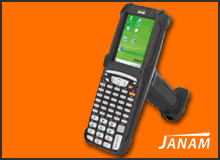
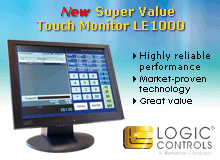
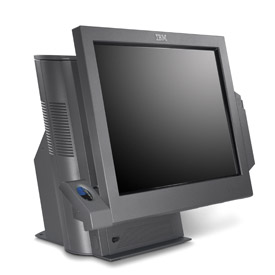
 600x120_G9.gif)



